‘Samurai’ in Japanese meant ‘the close attendants of nobility.’ It originated from the word ‘saburau’ in the Hein period, which transformed into ‘saburai’ in the Edo period. The first reference to the word ‘samurai’ was made by Kikinshu in the beginning of the 10th century. By the end of the 12th century, the word was taken as a synonym of ‘bushi’ which stood for the upper middle class or upper class of warriors. Samurai were military officers of pre-industrial Japan. The samurai followed a set of rules called bushido, and they are still known in Japanese society in general and particularly in the modern Japanese martial arts. According to the Taiho Code, the courtiers had 12 ranks, the first being that of the advisor to the king, and the samurai belonged to the sixth rank in this system. Samurai followed bushido, the way of warriors, which, according to them, was the dignified way of life, and it emphasized a samurai remaining dutiful and loyal to his master until death.
1. Akechi Mitsuhide

Akechi Mitsuhide, nicknamed Jubei, was born in 1528 and died on July 2, 1582. He was a samurai of the Sengoku period of feudal Japan. He was a general of Daimyo Oda Nobunaga, whom he deceived and caused his death. Mitsuhide started serving Nobunaga after his victory in the Mino province in 1566. Nobunaga never trusted his officers as much as he trusted Mitsuhide. Nobunaga assigned him the task of defeating many clans like the Hatanao and Ishiki of Tango while he received a castle as encouragement. Mitsuhide was also awarded the Kamiyama Castle and the Tanba region. Nobunaga betrayed and killed Hideharu, and to retaliate, his retainers killed Mitsuhide’s mother. It is not known exactly, though, if it might have been the cause of Nobunaga’s murder on June 21, 1582.
2. Sanada Saemon-no-Suke Yukimura

Sanada Saemon-no-Suke Yukimura, also known as Sanada Nobushige, was born in 1567 and died on June 3, 1615. He was a Japanese samurai and was the son of Daimyo Sanada. Both the father and son were renowned warriors. His father was reputed as a hero who appears once in 100 years as a crimson demon of war. Shimazu Yukimura, the famous veteran of the invasion of Korea, said about him that he was ‘Number one warrior in Japan.’ Sanada resisted, and Tokugawa Hidtada’s army comprising 40,000 soldiers with his army comprising only 2,000 soldiers did battle together.
3. Hattori Hanzo
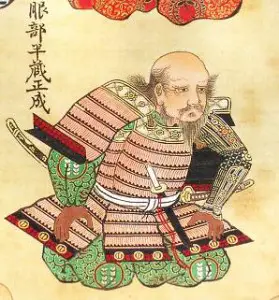
Hattori Hanzo was born in 1542 and died on December 23, 1596. He was a well-known samurai and ninja master of the Sengoku period. He is best known for saving the life of his master Tokugawa Leyasu who later became the ruler of the united Japan. He is known for his fearlessness. He fought his first battle at the age of 16. A gate of Tokyo Imperial Castle is named in his honor. A subway railway station is also named Hanzo Station after him.
4. Tomoe Gozen
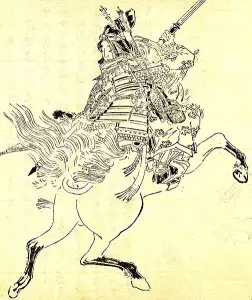
Tomoe Gozen was born in 1157 and died in 1247. She was a concubine of Minamoto no Yoshinaka and was a female samurai of exceptional fighting spirit and skill. She fought in the Genpei War and survived. An historical account about her personality, as given in the Tale of Heike, reflects upon her as ‘Tomoe was especially beautiful with white skin, long hair, and charming features. She was also a remarkably strong archer, and as a swordswoman, she was a warrior worth a thousand, ready to confront a demon or a god, mounted or on foot. She handled unbroken horses with superb skill; she rode unscathed down perilous descents. Whenever a battle was imminent, Yoshinaka sent her out as his first captain, equipped with strong armor, an oversized sword, and a mighty bow, and she performed more deeds of valor than any of his other warriors.’
5. Date Masamune
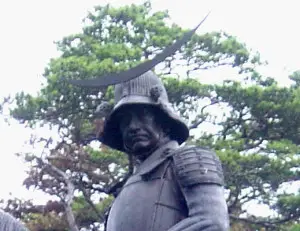
Date Masamune was born on September 5, 1567 and died on June 27, 1636. He was the founder of the modern city of Sendai. He lost one of his eyes due to smallpox in his early childhood. On account of his brutal lifestyle, he was known as the one-eyed dragon. In his time, he was the most feared man in Japan due to his ruthless killing of whoever crossed his way. He was a strong heir in the line of daimyo. He was a legendary character and had been portrayed in many Japanese dramas. He chased the kidnappers of his father Terumune and killed all of them.
6. Takeda Shingen
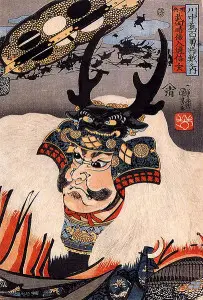
Takeda Shingen, son of Takeda Nobutora, was born on December 1, 1521 and died on May 13, 1573. In his early childhood he was called Taro, a common expression for ‘the eldest son.’ His father Takeda Nobutora was the head of the Takeda clan and daimyo of the Kai province. He was a famous samurai of the Sengoku period and a well-known daimyo of the Kai province. Shingen is his religious name given to him by his Buddhist master. On account of his exceptional fighting skills, he was called The Tiger of Kia. He was rivaled by Uesugi Kenshin who was known as The Tiger of Echigo.
7. Toyotomi Hideyoshi
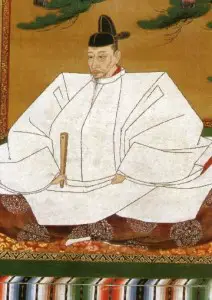
Toyotomi Hideyoshi was born Nakamura-Ku in Nagoya, the home of the Oda clan on February 2, 1536 and died on September 18, 1598. His master, Oda Nobunaga, nicknamed him ‘Kozaru’ meaning ‘little monkey.’ He was a famous daimyo warrior and general of the Sengoku period. He succeeded Oda Nobunaga. Ending the Sengoku period, he started the Momoyama period named after his castle. He united the political forces and took some steps of great importance in Japanese history. One of his notable actions was to restrict the carrying and use of arms exclusively by the samurai class. He created the Council of Five Elders, before his death, to take care of the state affairs until his son’s coming of age.
8. Hasekura Rokuemon Tsunenaga
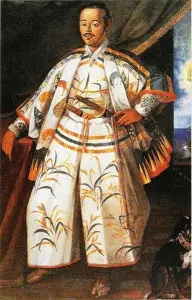
Hasekura Rokuemon Tsunenaga was a Japanese samurai and an officer of Date Masamune, the daimyo of Sendai. He is best known for his historic diplomatic mission to Vatican Rome through his voyage from Veracruz to Acapulco in New Spain. He sailed to Mexico in 1619 and, prior to returning to his homeland, he sailed from Acapulco for Manila. And during 1613 to 1620, he visited many other ports in Europe. He is known as the first Japanese ambassador to visit America and Europe. On account of Japan’s trends for suppression of Christianity, European monarchs and the King of Spain refused any trade agreements with Japan.
9. Yamaoka Tesshu

Yamaoka Tesshu was born on June 10, 1836 and died on July 19, 1888. Also known as Tetsutaro, he was a famous samurai of the Bakumatsu period. He started practicing swordsmanship at the early age of nine years. After his family moved to Takayama, he started learning the Ono Ha Itto-Ryu style of fencing. He is best known for founding Itto Shoden Muto-ryu School of Swordsmanship. In 1863 he earned the position of Roshigumi, the masterless samurai. He was a chamberlain in the court of the Emperor Meiji.
10. Saito Hajime
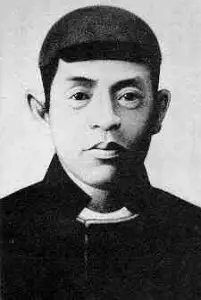
Saito Hajime was a born in Edo, Musashi province on February 18, 1844 and died on September 28, 1915. He was a famous Japanese samurai of the Edo period. He is best known for being the captain of the third unit of Shinsengumi. He fought many wars of the Bakumatsu period as a core member and was one of the few who survived. In the Japanese 2003 movie When the Last Sword is Drawn, Koichi Sato portrays Saito as a cold and careless captain of Shinsengumi who is transformed after his interaction with Kanichiro.
Conclusion:
Loyalty, fearlessness, and desperateness are the essential characteristics of samurai. Tori Mototada, who was sure of dying in the line of duty and loyalty to his master, fought with 2,000 men outnumbered by 40,000 enemy warriors. He wrote the last lines to his son ‘It is not the Way of the Warrior, bushido, to be shamed and avoid death ‘¦to sacrifice one’s life for the sake of his master is an unchanging principle. That I should be able to go ahead of all the other warriors of this country and lay down my life for the sake of my master’s benevolence is an honor to my family and has been my most fervent desire for many years.’










Leave a Reply